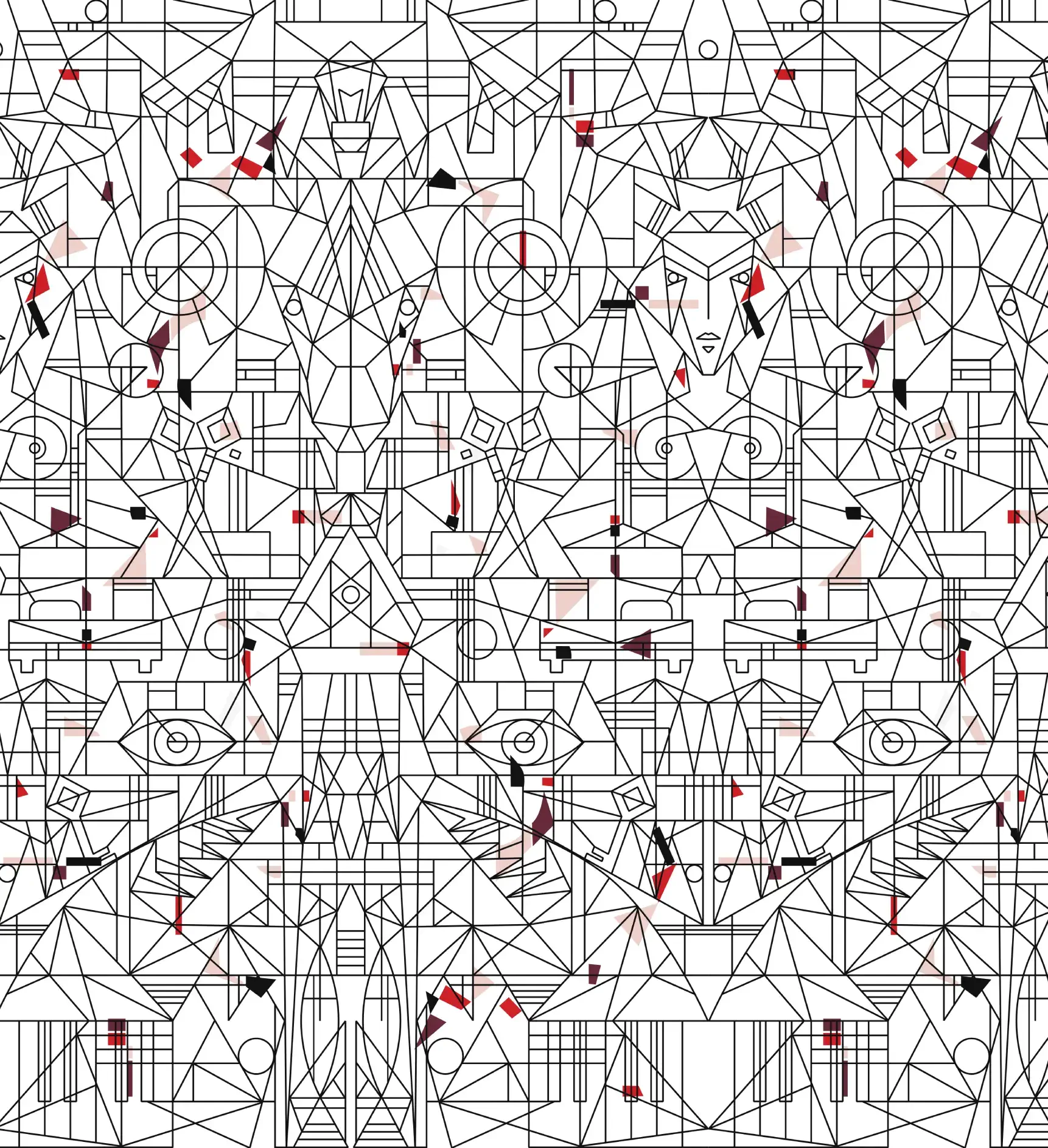
The long history of Mabi (Ma-astricht Bi-oscope) began in 1930. On Nov. 13 of that year, the Mabi held its opening performance.
This tells the story of a building with a rich history although it would not be said in the first instance when people pass it. A lot has taken place inside the walls but you let yourself be taken along in our discovery journey which of course starts with the name of the street where the building is located.
De Kleine – as well as the Grote Gracht – derive their name from the moat, which existed at the foot of the city wall of 1229 and was subdued in the 14th century. At the end of the street (on the Maas) stood the ‘Verlinxpoort’ this large structure was not immediately demolished after the expansion of the city, but served as a prison of bad payers. Only in 1587 she was demolished. The Latein name of the street is “Fossa extra Verlinghs porta”.
Post Office
We now take a leap in history and arrive in May 1814. After the French regime, per decree of the Prince of Orange dd. February 20, 1815, in function of post director, P. van der Vrecken recovered. He established his office in the St. Jacobstraat. There it remained until October 11, 1839 when G. G. Rouffaer became director. He moved the office first to the Vrijthof and, in 1844, to the Kleine Grach 24. The office remained here until 1852 when the new director G. Stern moved the office to the Markt.
Concert Hall
After the death of G. G. Rouffaer in 1852 we see J.H.L. Fridt or Fridel are listed. Who was Fridt or Fridel ? In the address book of 1835 is: ‘Fridel, proffesseur de musique, director of the orchestra of the Societé royale d’Harmonie’ or music trainer and musical director of the Royal Harmony. Behind the house Kleine Gracht 24 the first regular concert hall was built, under the three-year reign of director J. Schrammen of the Royal Harmony. Until the opening of the first ‘Staarzaal’ at Henric van Veldekeplein in 1907, this would remain the only concert hall. After the collapse of the harmony in 1872, the church bought the hall so that it would not be lost to the city. For a long time the hall would be known as ‘the zaol van de Keuninklikke Herremenie’.
Cinema
Amsterdam, March 1896; a fairground operator turns the first moving images for a Dutch audience. In 1901, the o’s and the ass also reached the Maastricht city council where decisions had to be made about the approaching Sint Servaas fair. On the Market may eventually be that famous biographer. When the Mullens brothers reach this message, they announce their ‘Bioscope’ on the 9th of May 1903 under their artist name ‘Alberts Frères’. The speaking ‘Bioscope’ is opposite to the City Hall. ‘Everything processed by an electric machine of ± 60 hp’. Because this device stood right behind the canvas, it was sprayed wet beforehand. After all, cloth and film were very flammable. In contrast to the admission price, the money was very high. They paid Fl. 743.00 for their fairground that was a fortune for that time. In May 1905, Mr. Lohoff presented his ‘photo Cinematograph’ at the fair. His program made an international impression than the mainly French-oriented program of ‘Alberts Frères’. In September they turned a film about the historic parade so that everyone could see themselves on the white screen. In 1906 successors were Alex Benner during the May Fair and ‘Hommerson et Fils’ in September. In 1907, ‘Hommerson et Fils’ with, among other things, the 25-minute, fully colored ‘400 tricks the Memphisto’. In September, ‘Alberts Frères’ were back at the fair. The cinema was ‘chic and tastefully decorated with plush upholstery and electric incandescent light bulbs, projections are fixed on the canvas and do not vibrate, explication is beautiful and clear and the accompaniment is provided with a keyboard and a violin’ to the extent that the comments in a local newspaper. In 1908 Lohoff arrived in May and ‘Alberts Frères’ in September. They came with 100,000 kilos of luggage and introduced their ‘Phono-Bio’. This was ‘a new, successful combination of voice and photographie’. It was used, among other things, for the opera film ‘Carmen’ and the film ‘We still drink a licorice’ from the Dutch comedian Dumas. In 1910 ‘Alberts Frères’ turned their films for the second year in the Staarzaal, while Alex Benner simultaneously showed his films during the May fair. But the Maastricht public wanted more enjoyment of the film performances and that is why the intention of the management of the concert hall during the upcoming winter came to exploit this room for a long time in the spirit of the ‘Walhalla’ in Liège. Contacts with the main film factories were already closed for the regular delivery and changing of films. The concert hall on the Kleine Gracht 24 was a space where all sorts of activities took place and at the end of 1910 also film screening. Although it was advertised in September, it took until October 17 before the first film was screened. The hall was next to W.J. van Lier, who exploited the room and the film explicitly connected a pianist and an operator. As expected, the concert hall cinema (Galabioscoop) did not remain the only film option in the city for long. On December 30, 1911, the second cinema opened at the Markt 35 above the café located there (now eatery Minckelers). The year 1913, without anyone’s suspicion, was an important year for the cinema industry in Maastricht. The beginning of the end of prehistoric times. The year of the real cinema. On 6 December, “Royal cinema” opened its gates to the Great State 55. Directors were Messrs. Hardy and Putzeist. In the same year, politics also started to interfere with cinema. On 10 November the city council handled a request to issue its own cinema regulation. The council went to work on this and on 25 November it came to a regulation that had to comply with all cinemas from Maastricht on 1 October 1914. The cinemas that eventually survived were ‘Royal cinema’ and the ‘Gala concert hall’, which Van Lier purchased from the church around 1914 and later renamed cinema ‘Pathé’ the predecessor of the later ‘MABI’.
Due to the construction of specially designed film theaters and the establishment of legal rules with which they had to comply, the film really got its own face in the social life of Maastricht.
Cinema Pathé / Mabi
The current appearance of the building at Kleine Gracht 24 is obtained during the renovation of 1921. The original two buildings are then joined together and given a uniform appearance. The planned ‘baldachin’ above the balcony on the first floor finds no mercy in the eyes of the local beauty committee and may therefore not be carried out. In addition to the aforementioned legal rules, a local cinema committee was set up. This determined which films were screened. More often, films were shown by the operators of cinemas which were officially banned and then the cinema could receive a warning or the license could be withdrawn. Next to cinema ‘Pathé’ owner W.J. van Lier, ‘Royal cinema’ of the company ‘Putzeist & Hardy’, in Wyck, was the cinema ‘Palace’ by G. Crijns.
In 1930, the cinema ‘Pathé’ was taken over by M. Vermin H. Teunissen and the name changed to ‘MABI’ (Maastricht Cinema). In July 1930 they were granted permission to have the building renovated by Architect Boosten. Instead of one balcony there are now two. The downstairs room has 486 seats, the first balcony 189 and the second 207, a total of 882 seats. Before the stage was an orchestra pit where the Mabi orchestra played under the direction of René Fontaine. For the sake of acoustics, the walls of the lower room were covered with celotex, a product consisting of compressed sugar cane fibers. On 13 November 1930, the opening will take place with the main film: ‘Die Weise Hölle vom Piz Palu’, directed by Arnold Franck and George Wilhelm Pabst, starring Leni Riefenstahl. In addition to the ‘MABI’, the Vermin family also operated 3 other cinemas. The ‘MEBIO’ (Meerssense Cinema) 1938 – 1965, the ‘HEBIOS’ (Heerder Cinema) 1939 – 1970 and the ‘LUX’ at the Brusselsestraat 1948 – 1972. Following the other cinemas, the ‘MABI’ in 1972 also splits its hall in two parts namely in the ‘MABI’ theater below and the ‘MIDI’ theater above. In the 1980s MABI 3 and 4 were opened, so that the original room with 882 seats and two balconies is now divided into four smaller rooms. Until 1994, the cinema remained on the Kleine Gracht. But after the construction of the mega-cinema on the Sint Maartenslaan the ‘MABI’ closes its gates and the building is waiting for a new destination for three years. This gets it when René Persoon drops his eye on the building in 1997. After a radical renovation of 10 months of both the interior and the exterior, one can now enjoy this Maastricht hotel where the film is still running but in a different way. Of the original building, only the façade with the characteristic balcony is still intact.
Sources:
Royal Harmony of Maastricht; I.M.H. Evers
How the wet canvas conquered Maastricht; U. Rietveld
Moving image cinemas in Maastricht; Frank Janssen

